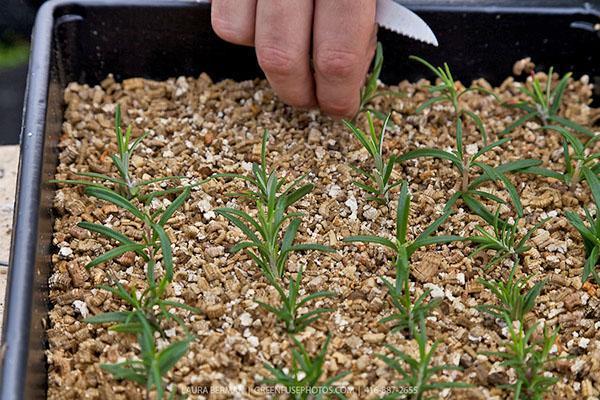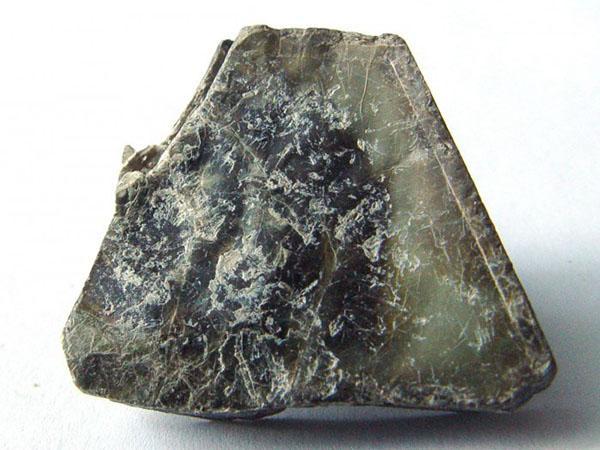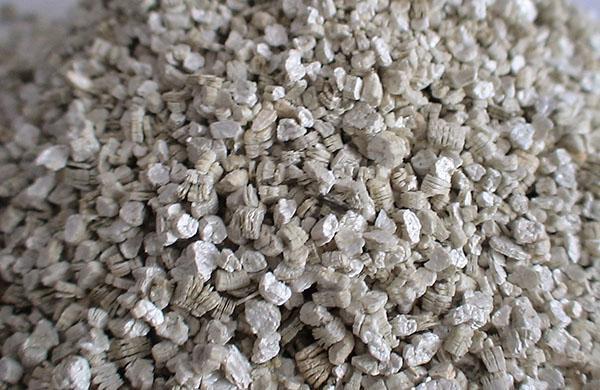How to apply vermiculite to plants to get good results

Every farmer should know how to apply vermiculite to plants. Vermiculite is a naturally occurring mineral that belongs to the hydromica groups. The mineral owes all its unique qualities to a special heat treatment. 
Chemical composition and properties
 The chemical composition of vermiculite includes trace elements useful for flowers: Ca, Mg, K, Fe, Al, Si, Mn. Vermiculite has the property of retaining nutrients that fertilize the soil. And then gradually these fertilizers are returned to the plants.
The chemical composition of vermiculite includes trace elements useful for flowers: Ca, Mg, K, Fe, Al, Si, Mn. Vermiculite has the property of retaining nutrients that fertilize the soil. And then gradually these fertilizers are returned to the plants.
The mineral does not rot and does not decompose when exposed to living organisms.
It has thermal insulation properties, and also promotes the absorption of moisture in huge quantities: 200 g of vermiculite can absorb about 800 g of liquid. Vermiculite is not vulnerable to all kinds of acids and alkalis; it is an environmentally friendly mineral.
Expanded vermiculite, or in other words, agrovermiculite for plants has a porous structure. It is an almost weightless and crumbly mineral with atypical scales. Agrovermiculite is used to instantly absorb all moisture and the resulting fertilizers. As needed, the mineral returns nutrients, creating favorable conditions for plant roots to nourish.
Vermiculite application
 Vermiculite is used for domestic plants, for fertilizing a summer cottage, growing crops and germinating seeds, that is, everywhere.
Vermiculite is used for domestic plants, for fertilizing a summer cottage, growing crops and germinating seeds, that is, everywhere.
For indoor plants
 Vermiculite contains a quarter of the periodic table, which makes it irreplaceable fertilizer... For indoor plants, vermiculite is best suited in medium granules, orange or pink. Light will not work, because it contains an excessive amount of Ca and a lack of Mg. Succulents are especially in need of vermiculite, they do not like excessive moisture and are indifferent to saline soil. For succulents, it is advisable to choose a drainage of 2 cm in size, and pour it on 1/3 of the height of the container in which the flower is planted.
Vermiculite contains a quarter of the periodic table, which makes it irreplaceable fertilizer... For indoor plants, vermiculite is best suited in medium granules, orange or pink. Light will not work, because it contains an excessive amount of Ca and a lack of Mg. Succulents are especially in need of vermiculite, they do not like excessive moisture and are indifferent to saline soil. For succulents, it is advisable to choose a drainage of 2 cm in size, and pour it on 1/3 of the height of the container in which the flower is planted.
 Certain houseplants require regular and intensive watering, but react painfully to flooding. But high drainage from vermiculite in such a situation can only aggravate the condition of the plant. High drainage and loosening of the earth for these plants must be made of zeolites, they endow the water with softness. The properties of vermiculite do not differ in this quality.
Certain houseplants require regular and intensive watering, but react painfully to flooding. But high drainage from vermiculite in such a situation can only aggravate the condition of the plant. High drainage and loosening of the earth for these plants must be made of zeolites, they endow the water with softness. The properties of vermiculite do not differ in this quality.
Also vermiculite is used for plants in greenhouses.
For germinating seeds
 Vermiculite is also a great way to germinate seeds. The method of germinating seedlings from seeds using this mineral is simple. To begin with, vermiculite is moistened and seeds are mixed with it for germination. The vermiculite mixed with the seeds is wrapped in polyethylene material. If everything is done correctly, then the result will not be long in coming.
Vermiculite is also a great way to germinate seeds. The method of germinating seedlings from seeds using this mineral is simple. To begin with, vermiculite is moistened and seeds are mixed with it for germination. The vermiculite mixed with the seeds is wrapped in polyethylene material. If everything is done correctly, then the result will not be long in coming.
As soon as signs of germination have been noticed, the seedlings must be transferred to the ground. Transplanting is carried out as follows: vermiculite, mixed with soil, is placed in a container, where germinated seeds will be planted later.The good thing about this method is that the results are noticeable almost immediately, unlike growing seedlings in ordinary soil. The mineral not only provides nutrients for germination of seeds, but also contributes to the fight against "black leg" and rot, which occurs on the shoot and on the roots of plants in 99% of cases.
 When the seedlings have already hardened and are ready for planting, they are transferred to clean soil, but additions in the form of vermiculite are not neglected. Outdoor recommends using not too much mineral. When the soil is prepared, they begin to plant the plants. It is not worth worrying about the fact that the seedlings will not take root. The mineral can be applied to the soil in a complex manner.
When the seedlings have already hardened and are ready for planting, they are transferred to clean soil, but additions in the form of vermiculite are not neglected. Outdoor recommends using not too much mineral. When the soil is prepared, they begin to plant the plants. It is not worth worrying about the fact that the seedlings will not take root. The mineral can be applied to the soil in a complex manner.
Good companions are:
- peat;
- manure;
- litter;
- straw;
- mineral fertilizers.
All nutrients are mixed in proportions 1: 1 and added to the soil before planting seedlings.
In the country
 Before using vermiculite in the garden, it is pre-moistened. It is best to choose vermiculite in small granules on open ground. Then it is mixed with seeds and scattered by hand evenly throughout the territory.
Before using vermiculite in the garden, it is pre-moistened. It is best to choose vermiculite in small granules on open ground. Then it is mixed with seeds and scattered by hand evenly throughout the territory.
When planting fruit and berry crops, their roots are dipped in cow dung diluted with water. Pre-moistened vermiculite in large granules is poured into the rest of the liquid. The resulting mixture is filled with planting holes. For shrubs - a quarter of a bucket, for trees - half. From above, everything is covered with soil and watering is carried out. Thus, you can easily protect plants from fungus.
 When mulching the earth, use a mixture of bird droppings or cow dung with vermiculite. It is advisable to use small and medium-sized burgundy substrate granules. This method will help disinfect the soil.
When mulching the earth, use a mixture of bird droppings or cow dung with vermiculite. It is advisable to use small and medium-sized burgundy substrate granules. This method will help disinfect the soil.
 Also vermiculite in vegetable gardens is used to loosen the soil. To do this, dig up a site to a depth of 30 cm. Add a substrate to the heavy soil, preferably medium granules of any kind. Vermiculite is distributed in half a liter per 1 sq. m, then harrow the soil and provide intensive watering. After all the procedures, they begin to sow seeds, at the end of sowing, the site is watered again.
Also vermiculite in vegetable gardens is used to loosen the soil. To do this, dig up a site to a depth of 30 cm. Add a substrate to the heavy soil, preferably medium granules of any kind. Vermiculite is distributed in half a liter per 1 sq. m, then harrow the soil and provide intensive watering. After all the procedures, they begin to sow seeds, at the end of sowing, the site is watered again.
It is strictly forbidden to use vermiculite for plants that cannot tolerate alkaline conditions (strawberries, herbaceous berry plants).
Advantages and disadvantages

First, let's start with the disadvantages:
- Vermiculite of fine fractions is extremely dusty, it often happens that it gets into the eyes, nose and mouth. Therefore, when working with him, they put on a special protective mask that will protect the organs of vision and respiration.
- Fertilizer is not readily available. You can not find it in every specialized store.
- A couple of shades of the mineral, namely gray and yellow, make it difficult to detect pests such as rootworm, mushroom mosquito larvae, etc.
- In plant growing, it slowly releases moisture, therefore it is always used in combination with perlite, which accelerates the process of moisture release.
- Fertilizer is used with caution in its pure form and when watering with hard water, since the neutral chemical reaction of the mineral can sharply become a violent alkaline reaction. The consequence will be blocking the availability of nutrients.
- When watering with hard water, there is a possibility that the soil may acidify, and this adversely affects the growth and development of the plant. To avoid this, the water is boiled and defended before watering.
Now let's move on to the merits:
- Significantly improves soil quality.
- Fertilizer maintains water balance in the soil and reduces the level of acidity.
- Soil salinity decreases.
- Serves as good protection against sudden temperature changes.
- Over time, it does not decompose and does not rot.
- Reduces the chance of getting fungus and root rot.
- Increases productivity.
- Good for hydroponics.
- Significantly increases the shelf life of fruits and vegetables.
- It removes harmful chemicals and heavy metals from the soil, which improves product quality.